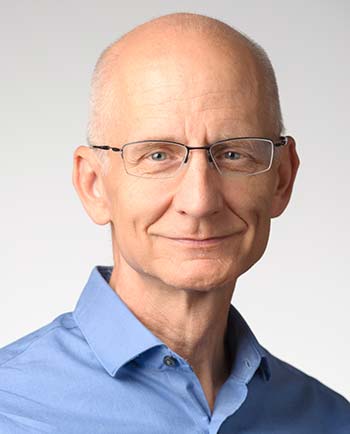Q&A with John Barnett: Building NREL's Role in Security and Resilience

Q. What led to your new position as director of NREL’s Energy Security & Resilience Center?
I came to NREL 12 years ago because of the mission, first working on financing mechanisms for energy efficiency and later coordinating NREL’s international activities. Prior to NREL, my work included 10 years at the Institute for Defense Analyses in the Washington, D.C., area, where I focused on space and information systems. I also served a few years at the Rocky Mountain Institute in a program focused on the links between natural resource utilization and global security. Directing the ESR Center combines NREL and pre-NREL experience, so it really is a synthesis of my career up to this point.
Q. NREL has been doing research in energy resilience for a long time. How does the ESR Center fit in?
The center is intended to be an anchor organization for resilience and security work across the lab. In resilience, we’re trying to strengthen coordination among the lab’s many groups that are working in this area as we expand the scope of our work from the established, more local natural disaster recovery work to more expansive work, such as the North America Energy Resilience Model (NAERM). The ESR Center is an entry point for outside partners who want to benefit from NREL’s security and resilience expertise.
One of our focus areas is resilience science. We’re emphasizing fundamental understanding of resilient system design in order to inform mitigation investments and operational strategies to minimize the impact of network disruptions. We want rigorous methodologies—and vivid visualizations—to help our clients understand how to prioritize their efforts for the best impact.
Q. How will NREL’s ESR work impact energy systems?
Energy system trends are dynamic across the board: in technology, system configuration, operational strategies, and business models. We have expertise in all these areas and are especially strong in developments at the grid edge, that is, the interface between the distribution system and quickly proliferating devices such as smart buildings, connected transportation, energy storage, and distributed generation.
Reflecting NREL’s established future orientation, we plan to contribute analysis, design, and evaluation supporting evolution of secure and resilient future energy systems
Q. What is the role of cybersecurity in electrical systems?
The grid is becoming more decentralized. The growing number of devices connected to the grid means that the possibilities of cyber-attack are also growing, especially because cybersecurity has been an afterthought in many system designs. The Department of Energy’s attention to this important challenge was reflected in the recent U.S. Department of Energy Cybersecurity Conference, led by the department’s Office of the Chief Information Officer, here in Denver. It was a great chance to hear more about information system challenges across the DOE enterprise and innovative approaches to their solution.
We can’t build a wall around our systems: some attacks will get through. But if our systems are attacked, we want to recover quickly and with minimal interference to energy services
Q. The ESR center is relatively new. What are its first few steps?
We’re developing NREL’s niche in security and resilience. We began by developing and coordinating an Energy Security and Resilience Strategic Plan, and we’re working to hire people in some new areas of expertise and establish partnerships with industry, academia, and other national labs.
Last Updated May 28, 2025
